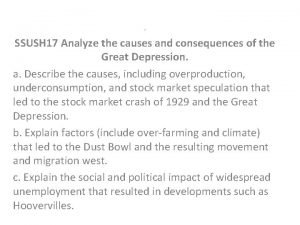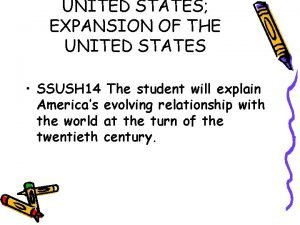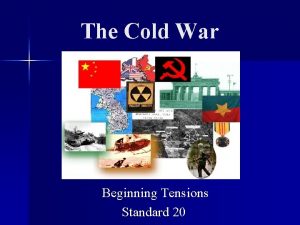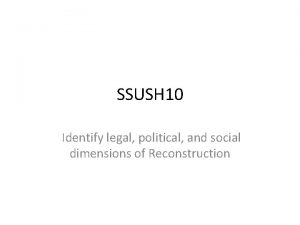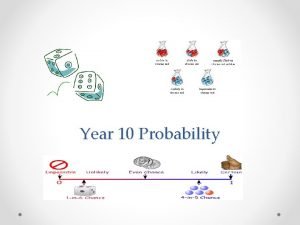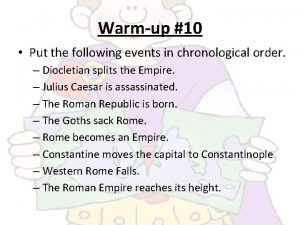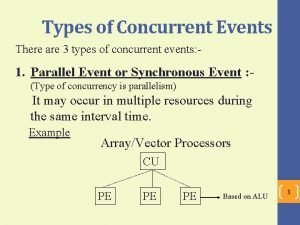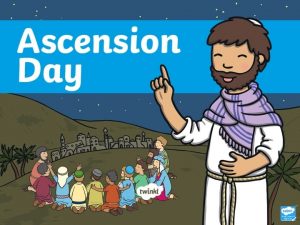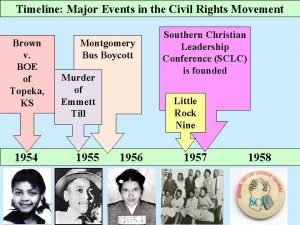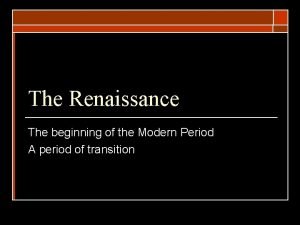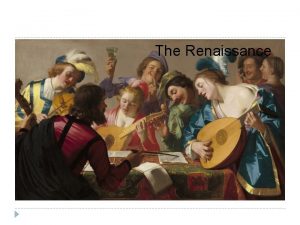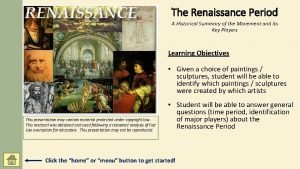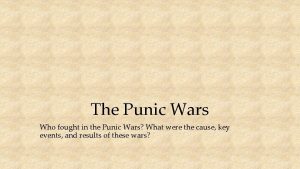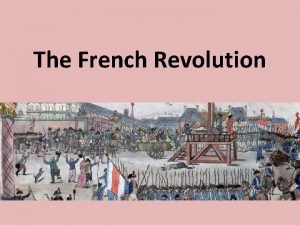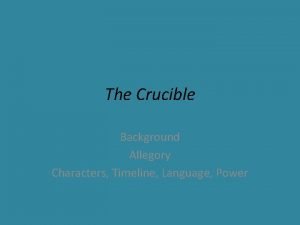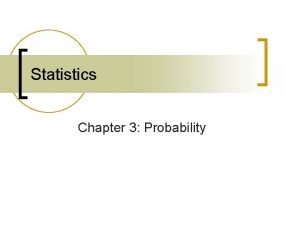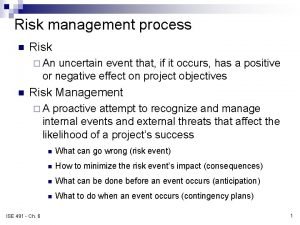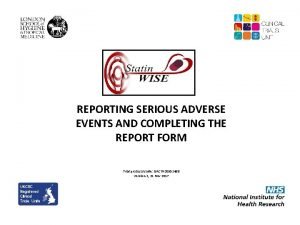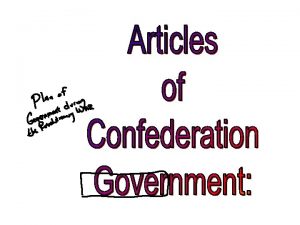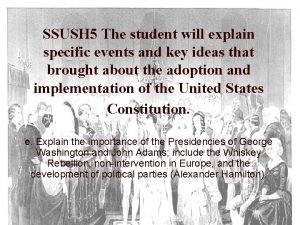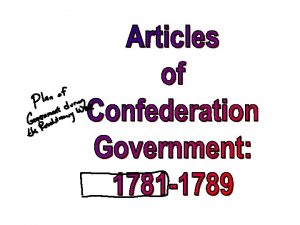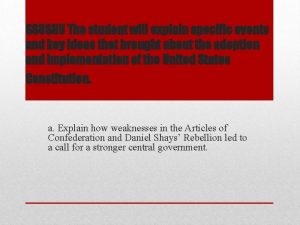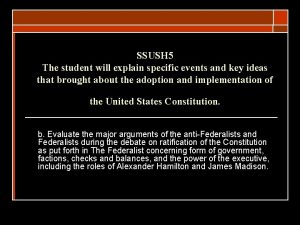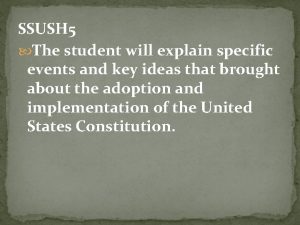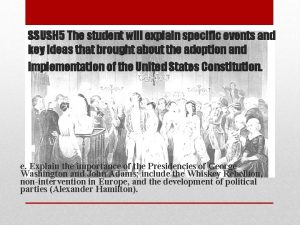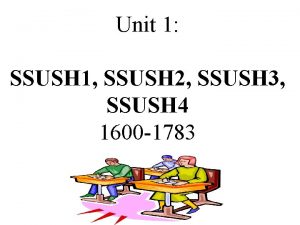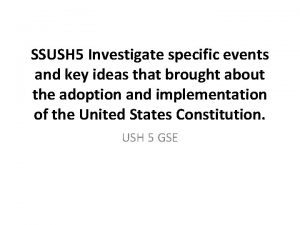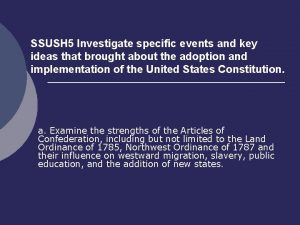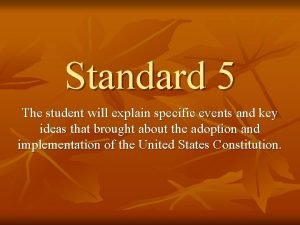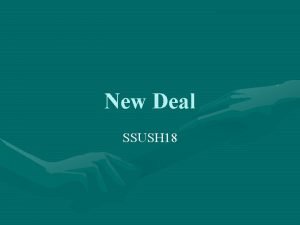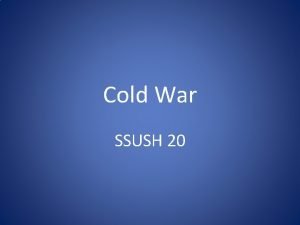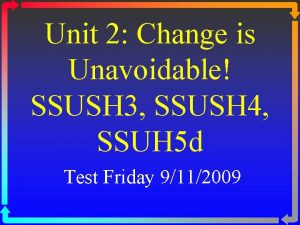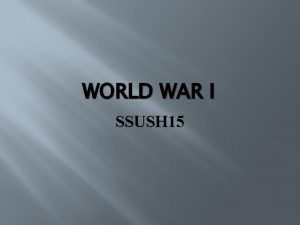SSUSH 5 The student will explain specific events




















































































- Slides: 84

SSUSH 5 The student will explain specific events and key ideas that brought about the adoption and implementation of the United States Constitution.

SSUSH 5 a Explain how weaknesses in the Article of Confederation and Daniel Shay’s Rebellion led to call for a stronger central government.

The Articles of Confederation Weaknesses The Articles of Confederation • Consisted of only one branch of government: the legislative branch, or Congress. • Congress carried out the duties of both the legislative and executive branches. • No national court system existed. • Congress could declare war and borrow money, but lacked the power to tax.

Opposition to the Articles Americans generally agreed that their new nation should be a democracy, a government by the people. Specifically, they desired a republic, a government run by the people through their elected representatives. Economic Problems Huge amounts of public and private debt were creating economic chaos in the new republic. Many upper-class critics of the Articles felt that this problem was due to citizens having too much power in their state legislatures. Concerns About Weak Government A group called the Nationalists felt that a weak national government could not keep order. They argued that European history had demonstrated that people were not naturally wise enough to have so much power over their own affairs.

Shays’ Rebellion Causes of Shays’ Rebellion • In order to help pay off its large debts, Massachusetts passed the heaviest direct tax ever. This tax had to be paid in specie, gold or silver coin, rather than paper money. • A group of farmers led by Daniel Shays rebelled against these taxes in a crisis which came to be known as Shays’ Rebellion. • Farmers drove off tax collectors and forced courts to close when their petitions were rejected. Soon, open conflict raged as angry crowds rioted. Effects of Shays’ Rebellion • Congress had no money to raise an army to counter Shays’ Rebellion. It also could not force states to pay for one. • The Massachusetts state government raised an army that quieted the rebellion. • However, Shays’ Rebellion demonstrated to many prominent Americans that a stronger national government was needed to avoid civil unrest.

SSUSH 5 b Evaluate the major arguments of the anti. Federalists and Federalists during the debate on ratification of the Constitution as put forth in the Federalist concerning form of government, factions, check and balances, and the power of the executive, inducing the roles of Alexander Hamilton and James Madison.

The Federalist View • For the Constitution to become law, 9 out of the 13 states had to ratify, or approve, it. Special conventions called in each state would decide whether or not to ratify the Constitution. • Those who favored the Constitution were called Federalists. The Federalists included many Nationalists, such as George Washington, James Madison, and Alexander Hamilton, who favored a strong national government. • To make their case for the Constitution, the Federalists wrote a series of 85 essays, collectively known as The Federalist. One issue addressed in these essays was that one powerful faction, or group concerned only with its own interests, could not control the government under the Constitution.

The Anti-Federalist View • • Those who opposed the Constitution were called anti-Federalists. Anti. Federalists believed that the Federalists’ plan threatened state governments and the rights of individuals. The anti-Federalists included older revolutionary figures such as Patrick Henry, people in isolated areas who had less need for a strong national government, and some former Nationalists who wanted a national government but were unhappy with the Constitution. According to the anti-Federalists, a President would be too similar to a king, a figure whose control American patriots had fought to escape. Anti. Federalists also objected to the proposed federal court system. While the Federalists feared the people more than government, the anti. Federalists feared government more than the people.

Why the Federalists Won The Federalists had several advantages over the anti-Federalists. These included: (1) The Federalists (2) The Federalists (3) The Federalists (4) The Federalists drew on the widespread feeling that the Articles of Confederation had serious flaws. were a united, wellorganized national group, while the anti. Federalists tended to consist of local politicians who did not coordinate their activities on a national level. had an actual document and plan which they could defend. The anti. Federalists had no constructive plan of their own to offer. had the support of George Washington, a respected Revolutionary War hero. Delaware, New Jersey, and Connecticut quickly ratified the Constitution. In June 1788, New Hampshire became the ninth and final state needed to ratify the Constitution.

SSUSH 5 c Explain the key features of the Constitution, specifically the Great Compromise, separation of powers, limited government, and the issues of slavery.

Divisions at the Convention The convention in Philadelphia had been empowered only to amend, or revise, the Articles of Confederation, not to replace them. However, two plans for a new national government emerged at the convention. The Virginia Plan • Proposed a bicameral, or two-house, national legislature • Each state would send representatives in proportion to the number of its citizens. • The new legislature would have the power to tax; the right to regulate foreign and interstate commerce; to veto, or prohibit from becoming law, any act of a state legislature; and to use force against a state, should that state defy national authority. The New Jersey Plan • Proposed a unicameral, or one-house, national legislature, and the creation of executive and judicial branches • Each state would send the same number of representatives to the legislature. • The new legislature would have the right to tax and to regulate foreign and interstate commerce.

Reaching Agreements • In the Great Compromise, delegates agreed to create a legislative branch made up of two houses. One house, the Senate, would have the same number of representatives from each state. In the other house, the House of Representatives, representation would be based on state population. • Another difficult issue was whether or not to include enslaved persons when determining a state’s population and therefore its representation. According to the Three-Fifths Compromise, three fifths of a state’s slave population would be counted when determining representation. • After further debate, the convention approved the final draft of the United States Constitution on September 17, 1787. The strengths of the Constitution have helped it endure for more than 200 years.

Government Structure Federal and State Powers • The Constitution created a federal system of government, in which power is shared among state and national authorities. • In a federal system of government, powers are divided into three categories: – Some powers are reserved for the states only. – Others are delegated to the federal government only. – Still others, called concurrent powers, are held by both the federal government and state governments. Separation of Federal Powers • Within the federal government, a separation of powers was created to prevent any one of the three branches of government from acquiring too much power. • Each branch has its own area of authority, but no one branch has complete power over the government. • The Constitution also set up a system of checks and balances, in which each branch has the power to check, or stop, the other branches in certain ways. This system prevents the misuse of power by any one branch.

Congress, the President, and the Federal Courts The Federal Courts • “Interpret the law” Congress The President • The Constitution calls • “Makes the law” • “Carries out the law” for one Supreme Court • Each of the two houses • The President would be chosen and several lesser of Congress was granted by a group of electors from courts, although the different powers. Each each state. The candidate with details of the federal was also designed with the majority of votes in the court system were different methods of electoral college, or group of intentionally left vague. election and different electors, would become Supreme Court term lengths, making the President. The President was justices would be House more receptive to granted enormous powers, appointed for life by public opinion and the including the power to veto acts the President with the Senate more stable. of Congress and to appoint consent of the Senate. judges for the federal courts.

SSUSH 5 d Analyze how the Bill of Rights serves as a protector of individual and states’ rights.

For and Against the Bill of Rights For the Bill of Rights • Many Americans believed that the national Constitution, like most state constitutions, should include a clear declaration of the rights of the people. • In September 1789, Congress proposed twelve constitutional amendments, largely drafted by James Madison and designed to protect citizens’ rights. • Ten of these amendments were ratified by the states. These ten amendments became known as the Bill of Rights. Against the Bill of Rights • Most Federalists saw no need for these amendments. • These Federalists claimed that under the Constitution, the people and the government were the same. Therefore, the people needed no additional statements to protect their rights.

The Bill of Rights

SSUSH 5 e Explain the importance of the Presidencies of George Washington and John Adams; include the Whiskey Rebellion, nonintervention in Europe, and the development of political parties (Alexander Hamilton).

Washington’s Government • • • Washington knew that during his first administration, or term of office, he and his officials were establishing precedents for how to govern. A precedent is an act or statement that becomes an example, rule, or tradition to be followed. Washington worked to establish a tone of dignity in his administration. The President held regular receptions for government officials and was escorted by soldiers when he traveled. Although he felt that such pomp was necessary to command respect, others saw these activities as reminiscent of a king and his court. In 1792, Washington won unanimous reelection. His second term, however, became marked by criticism and controversy.

John Adams as President The XYZ Affair • At the beginning of the Adams administration, the United States was drifting toward war with France. • The United States sent officials to France to negotiate. These officials were met by three secret agents: X, Y, and Z, who demanded a bribe and a loan to France. • The U. S. officials refused to pay the bribe and were met with public acclaim for their patriotism upon their return home. • This XYZ affair infuriated Americans, resulting in what amounted to an undeclared naval war with France. The Alien and Sedition Acts • The Federalists took advantage of the war crisis to push important new measures through Congress. These included the Alien and Sedition Acts of 1798. • Under the Alien Act, the President could imprison or deport citizens of other countries living in the United States. • Under the Sedition Act, persons who wrote, published, or said anything “false, scandalous, and malicious” against the American government could be fined or jailed.

Adams Loses Federalist Support • • • Adams angered many Federalists when he sought a peaceful solution to the undeclared naval war with France. Federalists such as Alexander Hamilton were in favor of a harsher policy toward France, including a declaration of war. Adams entered the election of 1800 with several disadvantages. First, when the United States made peace with France, the Jeffersonian Republicans’ support for France became less of a rallying point for the Federalists. Also, the unpopular Alien and Sedition Acts became even less justified without the threat of imminent war. Adams’s bid for re-election was further damaged when Aaron Burr, the Jeffersonian Republican nominee for Vice President, obtained and printed a damaging pamphlet against Adams written by Hamilton.

The Whiskey Rebellion • In western Pennsylvania and other frontier areas, many people refused to pay the new tax on whiskey. In addition to being a popular beverage, whiskey was one of the only products made out of corn that farmers could transport to market without having it spoil. • The resulting Whiskey Rebellion followed in the tradition of Shays’ Rebellion and protests against the Stamp Act. Rebels closed courts and attacked tax collectors. • President Washington and Secretary Hamilton saw the Whiskey Rebellion as an opportunity to demonstrate the power of the United States government. An army sent to the Pittsburgh area soon dissolved the rebellion, demonstrating the United States’ commitment to enforcing its laws.

Political Parties Emerge The Jeffersonian Republicans • Two political parties began to emerge in the new nation. A political party is a group of people who seek to win elections and hold public office in order to shape government policy and programs. • The Federalists formed one of these parties( Hamilton- strong federal government). The other, composed of critics of the Federalists, were called Republicans or Democratic. Republicans( Jefferson) because they stood for a more democratic republic. To avoid confusion, historians call them the Jeffersonian Republicans.

Assessment A strong Federalist would have MOST LIKELY supported which of the following? A. The Jeffersonian-Republicans B. The Article of Confederation C. The Bill of Rights D. The Constitution prior to any amendments Which of the original 13 colonies would have Most Likely been supportive of the Virginian Plan (large population state plan)? A. Delaware B. Rhode Island C. New Hampshire D. New York

Assessment Use the quotation below to answer the following question. “Gentlemen, I believe, that this compromise presents the best possible solution to this dilemma. Since those in the North feel strongly that slaves are not citizens and therefore should not be counted in the population, while our Southern representatives feel just as adamantly that they should be, I see no other solution. ” The above quote is referring to which of the following? A. The Three-fifths compromise B. The Connecticut Plan C. The Slave Trade Compromise D. The Virginia Plan

SSUSH 6 The student will analyze the nature of territorial and population growth and the impact of this growth in the early decades of the new nation.

SSUSH 6 a Explain the Northwest Ordinance’s importance in the westward migration of Americans, and on slavery, public education, and the addition of new states.

Northwest Ordinance • • • The Northwest Ordinance (formally An Ordinance for the Government of the Territory of the United States, North-West of the River Ohio, and also known as the Freedom Ordinance) was an act of the Congress of the Confederation of the United States. The Ordinance unanimously passed on July 13, 1787. The primary effect of the ordinance was the creation of the Northwest Territory as the first organized territory of the United States out of the region south of the Great Lakes, north and west of the Ohio River, and east of the Mississippi River. On August 7, 1789, the U. S. Congress affirmed the Ordinance with slight modifications under the Constitution. Arguably the single most important piece of legislation passed by members of the earlier Continental Congresses other than the Declaration of Independence, it established the precedent by which the United States would expand westward across North America by the admission of new states, rather than by the expansion of existing states. The banning of slavery in the territory had the effect of establishing the Ohio River as the boundary between free and slave territory in the region between the Appalachian Mountains and the Mississippi River. This division helped set the stage for the balancing act between free and slave states that was the basis of a critical political question in American politics in the 19 th century until the Civil War.

Education • Some Americans began to see education as a way to develop a rich and uniquely American culture. • Although some state constitutions called for free public schools, few state governments provided them, and private academies filled the gap.

SSUSH 6 b Describe Jefferson’s diplomacy in obtaining the Louisiana Purchase form France and the territory’s exploration by Lewis and Clark.

Jefferson’s Program in the West The Land Act of 1800 Napoleon and the The Louisiana Purchase French Under the Land Act of 1800, Americans were able to buy land in the western territories in small parcels and on credit. This encouraged the development of the frontier. Jefferson sent James Monroe and Robert Livingston to France to buy the city of New Orleans. The Lewis and Clark Expedition Napoleon offered Congress agreed not just New to fund an Orleans, but the expedition to entire French claim explore the of Louisiana instead. Louisiana Monroe and Purchase. The Livingston quickly two-year-long offered $15 million Lewis and Clark for the Louisiana expedition was Purchase. The successful in purchase filling in many of dramatically the details of increased the size these vast lands. of the United States and its national debt.

SSUSH 6 c Explain major reasons for the War of 1812 and the war’s significance on the development of a national identity.

War of 1812 • Many Americans, including members of Congress, blamed the British for ongoing frontier violence between Native Americans and white Americans. • Anger toward Britain increased due to the British practice of impressment, the act of forcing people into military service. British ships regularly stopped American ships at sea and removed men to serve in the British navy. • President James Madison called for war with Britain, which Congress approved. The war that followed became known as the War of 1812.

The War Ends • New Englanders suffered tremendous losses in trade during the war. In December 1814, they called a meeting known as the Hartford Convention to consider leaving the nation. Instead, the convention called for constitutional amendments to increase New England’s political power. • The War of 1812 officially ended on December 24, 1814, with the signing of the Treaty of Ghent, which restored all old boundaries between the United States and British territory in North America. The treaty did not, however, resolve many of the issues that had caused the war, such as the British practice of impressment. • Before news of the treaty reached the United States, General Andrew Jackson won a spectacular American victory against the British at the Battle of New Orleans. The victory raised morale and allowed Americans to end an unhappy war on a positive note.

SSUSH 6 d Describe the construction of the Eric Canal, the rise of New York City, and the development of the nation’s infrastructure.

Erie Canal The Erie Canal (currently part of the New York State Canal System) is a canal in New York State, United States, that runs from the Hudson River to Lake Erie, connecting the Great Lakes with the Atlantic Ocean. Although the canal was first proposed in 1699, it was not until 1798 that the Niagara Canal Company was incorporated and commenced preparations for building. The first section of canal was completed in 1819, and the entire canal was opened on October 26, 1825. It was 363 miles (584 km) long, 40 feet (12 m) wide, and 4 feet (1. 2 m) deep. There were 83 locks along the canal, each 90 feet by 15 feet (27 m by 4. 5 m). Maximum canal-boat displacement was 75 tons (68 tonnes). The Erie Canal was the first transportation route faster than carts pulled by draft animals between the Eastern Seaboard of the United States and the western interior, and cut transport costs into what was then wilderness by about 95%. The Canal resulted in a massive population surge in western New York, opened regions further west to increased settlement and was a prime factor in the growth of New York City as a port of trade.

Chapter 8, Section 1 Transportation and Communication Improvements in Transportation and Communication Early- to Mid- 1800 s Roads were needed for travel as well as to transport goods, deliver the mail, and herd animals. Although many roads were poorly built or built by private companies, the Cumberland Road, today known as U. S. Route 40, was built to last by the federal government. River Travel Rivers provided the country’s main transportation. Robert Fulton’s development of a commercially successful steamboat soon led to hundreds of steamboats transporting goods up and down American rivers such as the Mississippi. Canals Since water was the cheapest way to transport goods, American innovators built artificial waterways, or canals. The Erie Canal increased the settlement and development of the Great Lakes region. Railroads, using the new steam locomotive, became even more efficient than canals. The first American railroad, known as the Baltimore and Ohio (B&O) line, was followed by thousands more miles of rail track. Communication Improvements in the federal postal service, combined with an increasing number of newspapers and magazines, provided a national network of information exchange which helped tie together different parts of the country.

The Growth of Cities • Many young people sought work in the cities, as the American population outgrew the available farmland. • Population in large cities such as New York City, Boston, and Philadelphia skyrocketed. Smaller cities such as Baltimore also saw a dramatic rise in population.

SSUSH 6 e Describe the reasons for and importance of the Monroe Doctrine.

Nationalism Abroad • President Monroe, together with Secretary of State John Quincy Adams, began a new approach to American foreign policy. • One of Monroe’s main goals was to ease tensions with Great Britain, which remained high after the War of 1812. • In 1817, the United States and Great Britain signed the Rush-Bagot Agreement, which called on both nations to reduce the number of warships in the Great Lakes region. The following year, the two countries set the northern border of the United States at 49˚ North latitude. • Monroe was also concerned that other European countries, recovering from several years of warfare, would resume their efforts to colonize the Western Hemisphere.

The Monroe Doctrine In a speech on December 2, 1823, President Monroe established a policy that every President has since followed to some degree. The Monroe Doctrine had four main parts: The United States would not become involved in the internal affairs of European nations, nor would it take sides in wars among them. The United States recognized the existing colonies and states in the Western Hemisphere and would not interfere with them. The United States would not permit any further colonization of the Western Hemisphere. Any attempt by a European power to take control of any nation in the Western Hemisphere would be viewed as a hostile action toward the United States.

Assessment Read the quote below and answer the following question. “ The position of the United States if quiet clear. If any foreign power attempts to claim territory in the Americas, this nation will view such action as an act of aggression. No longer is this hemisphere a land to be conquered by European tyrants? US Public Official, 1820 The above quote is MOST LIKELY referring to A. The Declaration of Independence B. The Missouri Compromise C. The Monroe Doctrine D. Manifest Destiny

Assessment Look at at the chart and answer the following question. Louis and Clark Expedition led to the rapid migration of settlers to the Pacific Northwest War of 1812 X Louisiana Purchase turning point for the US as it began pursue prosperity within its own borders Monroe Doctrine the US declared no tolerance for European Intervention What goes where the X is? A. Allowed Native Americans to have their land black B. Gave more control of the United States to Britain C. Helped the US produce a stronger sense of national identity D. Great Britain defeated the US at Fort Mc. Henry

Assessment By roughly doubling the size of the United States, it opened the way to western expansion and meant that the US did not have to depend as heavily on imports from other nations. What was it? A. B. C. D. The Gadsden Purchase The Northwest Ordinance of 1785 The Louisiana Purchase The Missouri Compromise

SSUSH 7 Student will explain the process of economic growth, its regional. And national impact in the first half of the 19 th century, and the different responses to it.

SSUSH 7 a Explain the impact of the Industrial Revolution as see in Eli Whitney’s invention of the cotton gin and his development of interchangeable parts for muskets.

Eli Whitney’s Inventions Interchangeable Parts • New England inventor Eli Whitney implemented the idea of manufacturing interchangeable parts, in which all parts needed to make a product are made to an exact standard. • Whitney used his idea to manufacture guns. Other inventors later perfected the strategy, bringing the concept of interchangeable parts to other industries. The Cotton Gin • Whitney also devised the cotton gin, a machine that separates the seeds from raw cotton. • In 1794, Whitney gained a patent on the cotton gin, a license from the government giving him the sole right to make, use, and sell an invention for a period of time. • The cotton gin increased the amount of cotton that farmers could produce, with many farranging effects. Farmers sought new land to farm as well as more enslaved Africans to work on these lands.

SSUSH 7 b Describe the westward growth of the United States; include the emerging concept of Manifest Destiny.

Bound for the Pacific • • • Some Americans believed that it was their nation’s manifest destiny, or obvious or undeniable fate, to extend its reach from the Atlantic to the Pacific. Several Native American groups had lived in the Oregon Country, the area that stretched from northern California to the southern border of Alaska, for centuries. White settlers known as mountain men began trading with these Native Americans in the late 1700 s. The United States, Great Britain, Russia, and Spain all claimed rights to the Oregon Country. Russia and Spain soon gave up their claims, and the United States and Great Britain agreed to joint occupation of the area. Wagon trains brought thousands of pioneers along the Oregon Trail, the main route across the central plains and the Rocky Mountains. The Oregon Trail took settlers through mountain passes, low spots that allow travelers to cross over to the other side of a mountain range. Traders traveled along the Santa Fe Trail to Santa Fe, New Mexico.

SSUSH 7 c Describe reform movements, specifically temperance, abolitionism, and public school.

The Temperance Movement • The most widespread social reform movement during the early 1800 s was the temperance movement, an organized campaign to eliminate alcohol consumption. • Temperance reformers opposed alcohol consumption, arguing that it threatened family life and caused employee absenteeism. • Members of the movement encouraged people to take pledges of abstinence, or refraining from doing something, in this case drinking alcohol. They also worked for political change to ban the sale of alcohol. • Some states, beginning with Maine in 1851, passed laws banning the manufacture and sale of alcoholic beverages. However, protests soon led to the lax enforcement or the repeal of most of these laws.

Public Education Emergence of Public Education Desire for Public Education Beginning in the 1820 s, many working-class and middle-class Americans demanded taxsupported public schools. They felt that a democracy required citizens who were literate, informed, and morally upright. Opposition Views Others did not want their tax money to support schools. Many rural families depended on their children’s labor and did not want them to be required to attend school. Horace Mann helped Massachusetts pioneer school reform, encouraging other states to do the same. He also established the grade level system, consistent curricula, and teacher training programs. Moral Education Early public education was designed to teach Protestant moral values as well as reading and other skills. Students learned thrift, obedience, honesty, and temperance from books such as Mc. Guffey’s Readers. The Limits to Reform African Americans and girls often did not have the same opportunity to attend school that white boys did. When African Americans did attend schools, they were often segregated, or separated according to their race.

SSUSH 7 d Explain women’s effort to gain suffrage; include Elizabeth Cady Stanton and the Seneca Falls Conference.

A Women’s Rights Movement • American women delegates to the first World Anti-Slavery Convention in London, England, in 1840 were outraged when the convention voted to prohibit women from participating. • Two of these women, Lucretia Mott and Elizabeth Cady Stanton, turned their anger into action. In 1848, they organized their own convention on women’s rights.

The Seneca Falls Convention • • The women’s rights convention that Mott and Stanton organized, called the Seneca Falls Convention, was the first of its kind in United States history. At the convention, Stanton read her Declaration of Sentiments, a document which echoed the language of the Declaration of Independence. The convention passed 12 resolutions, including a controversial one calling for suffrage, or the right to vote, for women. Women opposed to suffrage argued that women should use their influence only within their homes. No African American woman attended the convention. Although many found the abolitionist movement to be a more pressing concern, some, including Sojourner Truth, were active in the women’s movement as well.

SSHSH 7 e Explain the Jacksonian Democracy, expanding suffrage, the rise of popular political culture, and the development of American nationalism.

Two New Parties Face Off The American System and the National Republicans • • • Adams and Clay pushed for laws authorizing the federal construction of roads, canals, bridges, and other public improvements. Supporters of Andrew Jackson in Congress blocked such plans at every turn. Supporters of Adams and Clay began calling themselves the Adams Party or National Republicans, later to be known as Whigs. Jackson and the Election of 1828 • Supporters of Andrew Jackson called themselves Jacksonians or Democratic Republicans. Historians now call them Jacksonian Democrats. • Jackson won the presidential election of 1828 by a large margin. • Many men who did not own property were allowed to vote for the first time. These voters chose Jackson, the candidate they felt was a man of the people.

Jackson as President Andrew Jackson as President 1829– 1837 Jackson’s Inauguration Jacksonian Democracy The Spoils System Limited Government When Jackson was inaugurated, supporters immediately rushed forward to greet him. They followed him into the White House to try to get a glimpse of their hero, the first President from west of the Appalachians. Jackson’s support came from thousands of new voters. New laws that allowed all white men to vote, as well as laws that let voters, rather than state legislatures, choose electors, gave many more people a voice in choosing their government. (universal suffrage) The practice of patronage, in which newly elected officials give government jobs to friends and supporters, was not new in Jackson’s time. Jackson made this practice, known as the spoils system to critics, official. Jackson believed in limiting the power of the federal government and used his veto power to restrict federal activity as much as possible. His frequent use of the veto helped earn him the nickname “King Andrew I. ”

The Bank War The Bank of the United States • Like many Americans, Jackson viewed the Bank of the United States as a “monster” institution controlled by a small group of wealthy easterners. Jackson Vetoes the Charter • Jackson vetoed the bill to recharter the bank, claiming that the back was a tool of the greedy and powerful. • Despite Clay and Webster’s intentions, the veto did not hurt Jackson’s campaign. Jackson won reelection in 1832 by a huge margin, defeating Clay, the National Republican candidate.

Assessment Which of the following is NOT a characteristic of Jacksonian democracy? A. Laissez-faire economics B. Strict interpretation of the Constitution C. Spoils System D. The Doctrine of Nullification What was one of the greatest impact of the cotton gin during the Industrial Revolution? A. It allowed people to harvest cotton much faster making it the basis of the South’s economy during the 1800 s. B. It allowed the North to become more industrialized and prosperous. C. It ended the South’s dependence on agriculture and freed the slaves. D. It improved Henry Ford’s assembly line with faster seat production.

Assessment Read the quote below and answer the following question. “He totally transformed the economies of two regions, but in entirely different ways. How could one man have taken one region of the nation down a path of increased reliance on factory workers, while at the same time making the South a region totally dependent on slaves” US Economist in the mid-1800 Who is the above quote MOST LIKELY referring to? A. Benjamin Franklin B. Thomas Edison C. Eli Whitney D. W. E. Dubois

Assessment President Thomas Jefferson negotiated the Louisiana Purchase despite the fact that the Constitution does not specifically grant the president power to acquire new territory. Given the fact that Jefferson held to a strict interpretation of the Constitution, his decision to acquire Louisiana is seen by many historians as. A. B. C. D. Consistent with the view of Jefferson originally held concerning the Constitution Inconsistent with Jefferson’s past views Supportive of arguments Jefferson made when he was secretary of state under President Washington Dishonest considering he did notify Congress of his decision

Assessment “Jacksonian Democracy” can BEST be described as A. B. Government that favors an elite few Representative government in which property owners are the only ones that vote C. A system of government in which even poorer white men have a voice D. Democracy based on equality, regardless of social standing, gender, or race

Assessment The search for gold, religious faith, and the desire for land were all A. B. C. D. Major causes of the Civil War Reasons for conflict with Spain Reasons why settler moved west Causes of the Nullification Crisis

SSUSH 8 The student will explain the relationship between growing north-south division and westward expansion.

SS USH 8 a Explain how slavery became a significant issues in American politics' include the slave rebellion of Nat Turner and the rise of abolitionism (William Lloyd Garrison, Frederick Douglas, and the Grimke sisters).

Slave Revolts Turner’s Rebellion • Nat Turner, an African American preacher, planned and carried out a violent uprising in August 1831 known as Turner’s Rebellion. • Local militia captured and hanged many of the rebels, including Turner. • Crowds of frightened angry whites rioted, killing about a hundred African Americans who had not been involved in the revolt.

An Antislavery Movement Arises The Antislavery Movement The Roots of Abolitionism Moderate Reforms Colonization of Liberia Radical Abolitionism The abolitionist movement, the movement to put an end to slavery, began in earnest during the late 1700 s. Antislavery societies and newspapers were created, and between 1777 and 1804, every state north of Maryland abolished slavery. At first, activists such as Quaker Benjamin Lundy advocated moderate reforms. Lundy and others called for a gradual program of emancipation, or freeing, of enslaved persons. In the early 1800 s, some abolitionists established a new state in West Africa, Liberia, believing that free African Americans could receive better treatment there than in America. Many African Americans were offended by this idea, believing themselves to be as American as white people. Some reformers, including white Bostonian William Lloyd Garrison, denounced moderation and called for an immediate end to slavery. Garrison founded the American Anti-Slavery Society in 1833 to work toward this goal.

Frederick Douglass Early Years • Frederick Douglass was born into slavery in Maryland in 1817. • Although Maryland state law prevented the education of slaves, Douglass was taught first by his owner’s wife and later educated himself. • As a field hand, Douglass was brutally beaten, reaching what he called a “turning point” in his life–the time that he fought back. • In 1838, Douglass disguised himself as a sailor and escaped to New Bedford, Massachusetts. Douglass as Activist • Douglass became a writer and speaker, earning a reputation for passion and eloquence. • Douglass founded an abolitionist newspaper, the North Star, in 1847. • To avoid capture by his former master, Douglass went to Europe, where he raised the money to purchase his freedom. • Douglass believed that slavery should be fought with deeds as well as words, although without violence.

Divisions Among Abolitionists Women’s Participation Racial Issues Tactics When the American Anti. Slavery Society insisted that female abolitionists be allowed to speak at meetings, some members resigned in disgust. Despite resistance, female abolitionists such as Sarah and Angelina Grimké and Sojourner Truth helped spread antislavery sentiment. African Americans felt a personal connection to the antislavery movement that many white people never understood. Some black reformers felt that white abolitionists regarded them as inferior. Some abolitionists, including Arthur and Lewis Tappan, felt that political action was needed. Others, including William Lloyd Garrison, supported other tactics. Garrison believed that the Constitution supported slavery, making new antislavery laws pointless.

SSUSH 8 b Explain the Missouri Compromise and tthe issue of slavery in western states and territories.

Effects of the Missouri Compromise • Territories acquired after the Mexican War forced an old question back into politics about whether or not slavery would be permitted in new territories. • Each new state that was admitted to the Union could tip the balance for or against slavery. Both sides wanted to establish their practices in the new territories before these territories became states. • The Missouri Compromise of 1820 had stated that any new states created north of 36° 30' N latitude had to be free states. Much of the new territory, however, was south of this line. • Some members of both parties who opposed slavery in the territories formed the Free Soil Party. The Free Soil Party did not win any states in the presidential election of 1848, but it did tip the balance in favor of Whig candidate Zachary Taylor.

SSUSH 8 c John C. Calhoun- South Carolina Senator –wrote pamphlet titled Exposition and Protest- argued for state’s rights and asserted that nay state could refuse to enforce a law that it saw unconstitutional 1832 - SC threatened to invoke this right and secede ( leave the union) if the offensive tariffs ere not repealed Nullification Crisis-state could declare a law null and void if it violated the Constitution

The Tariff Crisis • • • Before Jackson’s first term had begun, Congress passed the Tariff of 1828, a heavy tax on imports designed to boost American manufacturing. The tariff greatly benefited the industrial North but forced southerners to pay high prices for manufactured goods. In response to the tariff, South Carolina claimed that states could nullify, or reject, federal laws they judged to be unconstitutional. It based this claim on a strict interpretation of states’ rights, the powers that the Constitution neither gives to the federal government nor denies to the states. South Carolina nullified the tariffs and threatened to secede, or withdraw, from the Union, if the federal government did not respect its nullification. A compromise engineered by Senator Henry Clay ended the crisis. However, the issue of states’ rights continued to influence the nation.

SSUSH 8 d Describe the war with Mexico and the Wilmot Proviso.

War With Mexico The Mexican War, 1846 -1848 Beginnings of the Mexican War The Bear Flag Revolt Fighting the War A dispute over the southern border of Texas, President Polk’s dreams of acquiring Mexican lands, and a skirmish in April 1846 led to the Mexican War. Before news of the war had reached California, settlers there declared an independent Republic of California. The uprising became known as the Bear Flag Revolt after the bear pictured on the new republic’s flag. By January 1847, United States forces had taken control of the territories of New Mexico and California. The fighting continued in Mexico until September 14, 1847, when America captured Mexico City, the capital of Mexico.

The Mexican War provided an opportunity to extend America’s borders across the continent.

The Wilmot Proviso • Another important effect of the Mexican War was its role in bringing the question of slavery to the forefront of American politics. • Congress faced a decision about whether or not to allow slavery in the newly acquired territories. Its decision could tip the balance of political power toward either the North or the South. • The Wilmot Proviso, first attached to an 1846 bill, stated that slavery would be forbidden in new territories acquired from Mexico. Although the proviso was not passed, it continued to be added to bills concerning the new territories. • The Wilmot Proviso never became law. However, it revealed the growing gap between the North and the South over slavery.

The Treaty of Guadalupe Hidalgo • The Treaty of Guadalupe Hidalgo ended the Mexican War with substantial gains for the United States. • In the treaty, Mexico gave up its claims to Texas, California, and New Mexico in return for $15 million. • Five years later, Mexico sold more land to the United States. This Gadsden Purchase included land that became southern New Mexico and Arizona. Results of the Mexican War • The Mexican War, together with the Gadsden Purchase and the 1846 division of Oregon, established the borders of the continental United States as they are today. • In Mexico, bitterness developed toward the United States that would last for decades. • New American territory in the West opened the door to an even larger wave of western migration.

SSUSH 8 e Explain the Compromise of 1850

The Compromise of 1850 Clay Proposes a Compromise In 1849, Senator Henry Clay of Kentucky proposed what would become known as the Compromise of 1850 as a middle ground on the slavery debate. Terms of the Compromise As part of the Compromise, California would become a free state, New Mexico and Utah would decide their own slavery status, and a Fugitive Slave Act would order United States citizens to help return enslaved people who had escaped. Calhoun’s Opposition Senator John C. Calhoun of South Carolina represented much of the South’s view when he opposed the Compromise. Calhoun believed that southern states had the right to leave the Union if their rights were no longer being respected. ( State Rights Ideology) Webster’s Support Senator Daniel Webster of Massachusetts supported the Compromise, believing that it would help keep the Union together. Northern abolitionists, however, felt that Webster was putting financial matters ahead of humanitarian issues. Congress Approves the Compromise The Compromise of 1850 was passed, but it did little besides establish California as a free state. The Fugitive Slave Act infuriated northern abolitionists, including author Harriet Beecher Stowe.

The Compromise of 1850—Map The Compromise of 1850 helped define which states and territories would become free states and which would become slave states.

Assessment What agreement admitted California to the Union as a free state? A. The Compromise of 1850 B. Kansas-Nebraska Act C. Dred Scott Case D. Wilmot Proviso Read the quote below and answer the following question. “Provided that, as an express and fundamental condition to the acquisition of any territory from the Republic of Mexico by the United States, by virtue of any treaty which may be negotiated between them, and to the use by the Executive of the moneys herein appropriated, neither slavery nor involuntary servitude shall ever exist in any part of said territory, except for crime, whereof the party shall first be duly convicted? Where is this quote from? A. Missouri Compromise B. Dred Scott Case C. Wilmot Proviso D. Compromise of 1850

Assessment What did Frederick Douglass and William Lloyd Garrison have in common? A. They were both leaders of the abolitionist movement. B. They were both determined to expand slavery. C. They were each early black leaders in the United States. D. They both participated in John Brown’s raid.
 Ssush
Ssush Ssush
Ssush Ssush
Ssush Ssush
Ssush Ssush
Ssush Vertical integration
Vertical integration King of england during revolutionary war
King of england during revolutionary war Mutually exclusive vs non mutually exclusive
Mutually exclusive vs non mutually exclusive Specific gravity of water formula
Specific gravity of water formula Specific volume to density
Specific volume to density Concept learning and the general-to-specific ordering
Concept learning and the general-to-specific ordering Specific gravity meaning
Specific gravity meaning Last weekend essay
Last weekend essay What did they do last weekend
What did they do last weekend National student clearinghouse student tracker
National student clearinghouse student tracker Class maths student student1 class student string name
Class maths student student1 class student string name National student clearinghouse student tracker
National student clearinghouse student tracker Student freckle. com
Student freckle. com Good morning students,
Good morning students, Student learning space helpdesk
Student learning space helpdesk Hát kết hợp bộ gõ cơ thể
Hát kết hợp bộ gõ cơ thể Bổ thể
Bổ thể Tỉ lệ cơ thể trẻ em
Tỉ lệ cơ thể trẻ em Voi kéo gỗ như thế nào
Voi kéo gỗ như thế nào Tư thế worms-breton
Tư thế worms-breton Alleluia hat len nguoi oi
Alleluia hat len nguoi oi Môn thể thao bắt đầu bằng từ đua
Môn thể thao bắt đầu bằng từ đua Thế nào là hệ số cao nhất
Thế nào là hệ số cao nhất Các châu lục và đại dương trên thế giới
Các châu lục và đại dương trên thế giới Công thức tiính động năng
Công thức tiính động năng Trời xanh đây là của chúng ta thể thơ
Trời xanh đây là của chúng ta thể thơ Mật thư anh em như thể tay chân
Mật thư anh em như thể tay chân 101012 bằng
101012 bằng Phản ứng thế ankan
Phản ứng thế ankan Các châu lục và đại dương trên thế giới
Các châu lục và đại dương trên thế giới Thơ thất ngôn tứ tuyệt đường luật
Thơ thất ngôn tứ tuyệt đường luật Quá trình desamine hóa có thể tạo ra
Quá trình desamine hóa có thể tạo ra Một số thể thơ truyền thống
Một số thể thơ truyền thống Cái miệng nó xinh thế
Cái miệng nó xinh thế Vẽ hình chiếu vuông góc của vật thể sau
Vẽ hình chiếu vuông góc của vật thể sau Nguyên nhân của sự mỏi cơ sinh 8
Nguyên nhân của sự mỏi cơ sinh 8 đặc điểm cơ thể của người tối cổ
đặc điểm cơ thể của người tối cổ Giọng cùng tên là
Giọng cùng tên là Vẽ hình chiếu đứng bằng cạnh của vật thể
Vẽ hình chiếu đứng bằng cạnh của vật thể Tia chieu sa te
Tia chieu sa te Thẻ vin
Thẻ vin đại từ thay thế
đại từ thay thế điện thế nghỉ
điện thế nghỉ Tư thế ngồi viết
Tư thế ngồi viết Diễn thế sinh thái là
Diễn thế sinh thái là Các loại đột biến cấu trúc nhiễm sắc thể
Các loại đột biến cấu trúc nhiễm sắc thể Các số nguyên tố là gì
Các số nguyên tố là gì Tư thế ngồi viết
Tư thế ngồi viết Lời thề hippocrates
Lời thề hippocrates Thiếu nhi thế giới liên hoan
Thiếu nhi thế giới liên hoan ưu thế lai là gì
ưu thế lai là gì Sự nuôi và dạy con của hổ
Sự nuôi và dạy con của hổ Khi nào hổ con có thể sống độc lập
Khi nào hổ con có thể sống độc lập Sơ đồ cơ thể người
Sơ đồ cơ thể người Từ ngữ thể hiện lòng nhân hậu
Từ ngữ thể hiện lòng nhân hậu Thế nào là mạng điện lắp đặt kiểu nổi
Thế nào là mạng điện lắp đặt kiểu nổi Probability with replacement
Probability with replacement List the following events in chronological order
List the following events in chronological order Concurrent events
Concurrent events To kill a mockingbird chapter 12 questions
To kill a mockingbird chapter 12 questions Martin luther king jr life timeline
Martin luther king jr life timeline Jesus good friday timeline
Jesus good friday timeline Civil rights timeline of events
Civil rights timeline of events Cleavage furrow
Cleavage furrow Things fall apart 17-19 summary
Things fall apart 17-19 summary Renaissance characteristics
Renaissance characteristics What years did the renaissance take place
What years did the renaissance take place The renaissance summary
The renaissance summary Who fought the punic wars
Who fought the punic wars What is plot sequence
What is plot sequence The french revolution timeline
The french revolution timeline Crucible time line
Crucible time line Probability of 3 independent events
Probability of 3 independent events Sentinel vs adverse event
Sentinel vs adverse event Scentsy vendor event checklist
Scentsy vendor event checklist Wilt thou be gone it is not yet near day
Wilt thou be gone it is not yet near day Risk response matrix
Risk response matrix Adverse events in hospital
Adverse events in hospital Ct dph reportable events
Ct dph reportable events
